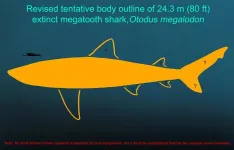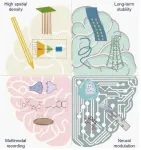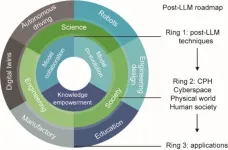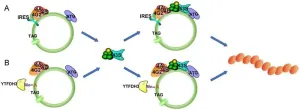(Press-News.org) A new study examining the effects of sleep patterns and shift work on the immune system has found that sleep debt and night shifts increase the risk of several common infections in nurses.
Modern society relies on shift work, which requires employees to work outside of traditional hours. While essential in sectors such as healthcare, growing evidence suggests that these work patterns may negatively impact worker’s health.
This study, which analysed self-reported data from 1,335 Norwegian nurses, found that shift work – particularly night shifts – was associated with a higher risk of several infections, including the common cold.
Published today in Chronobiology International, the peer-reviewed findings emphasise the importance of adequate sleep and shift management in reducing susceptibility to infection.
“These findings highlight the need for tailored interventions to reduce infection risks among healthcare workers,” says Siri Waage, senior author of the study, who is the coordinator at the Norwegian Competence Center for Sleep Disorders, Haukeland University Hospital, Bergen.
“Sleep debt and irregular shift patterns, including night work, not only compromise nurses’ immune health but could also impact their ability to provide high-quality patient care.”
The researchers analysed data from the Survey of Shift work, Sleep and Health (SUSSH) study, collected in 2018. The participants – mostly female nurses (90.4%), with an average age of 41.9 years – reported their sleep duration, sleep needs, shift work patterns, and how often they had experienced specific infections over the past three months.
Statistical analyses, adjusted for factors such as age, gender, marital status, and childcare responsibilities, revealed a clear link between slept debt, night work and infection risk.
The study found that sleep debt, defined as the gap between sleep need and actual sleep duration, increased infection risk in a dose-dependent manner:
Nurses with moderate sleep debt (1-120 minutes less sleep than needed) had a 33% higher risk of the common cold, while those with severe sleep debt (more than 2 hours) had more than double compared to those with no sleep debt.
The risk of pneumonia/bronchitis was 129% higher for moderate sleep debt and 288% for severe sleep debt.
Both sinusitis and gastrointestinal infections also showed higher risks with increasing levels of sleep debt.
The analysis also revealed that night work was linked with an increased risk of the common cold, but was not associated with any of the other infections examined. In contrast, sleep duration and ‘quick returns’ (short intervals between consecutive shifts) were not associated with infection risk.
These findings suggest that ensuring sufficient sleep may help prevent infections, although further research is needed to determine cause-and-effect relationships.
The authors propose several strategies that might help reduce sleep debt and potentially lower infection risks among nurses in the future.
“Nurses could benefit from optimised shift patterns, such as limiting consecutive night shifts and allowing adequate recovery time between shifts,” adds co-author Professor Ståle Pallesen, whose research specialisms blend psychology and insomnia, at the Department of Psychosocial Science at University of Bergen.
“Raising awareness about the importance of sleep for immune health and encouraging regular health screening and vaccinations for healthcare workers may also be helpful.”
A key strength of this study is its large sample size and focus on predominantly female nurses over 30, making it well-suited to analysing associations between sleep patterns and infection risk in this group. However, the findings may not be generalisable to men, younger nurses, other professions, or those with different shift work schedules.
Additionally, since data collection took place in the spring, outside the typical flu season, infection rates may have been lower than if the survey had been conducted in winter.
END
New study links sleep debt and night shifts to increased infection risk among nurses
2025-03-10
ELSE PRESS RELEASES FROM THIS DATE:
Megalodon’s body size and form uncover why certain aquatic vertebrates can achieve gigantism
2025-03-09
CHICAGO — A new scientific study provides many new insights into the biology of the prehistoric gigantic shark, Megalodon or megatooth shark, which lived nearly worldwide 15-3.6 million years ago. Paleobiology professor Kenshu Shimada of DePaul University led the study along with 28 other shark, fossil, and vertebrate anatomy experts around the globe. Findings from the study will be published in the journal “Palaeontologia Electronica.”
Formally called Otodus megalodon, it is primarily known only from its serrated teeth, vertebrae, ...
A longer, sleeker super predator: Megalodon’s true form
2025-03-09
The megalodon has long been imagined as an enormous great white shark, but new research suggests that perception is all wrong. The study finds the prehistoric hunter had a much longer body—closer in shape to a lemon shark or even a large whale.
The study team, which included researchers from University of California, Riverside and across the globe, used a novel approach to estimate the shark’s total body length, moving beyond traditional methods that rely primarily on tooth size. By examining megalodon’s vertebral column and comparing ...
Walking, moving more may lower risk of cardiovascular death for women with cancer history
2025-03-09
Research Highlights:
Increased physical activity including taking more daily steps was linked to a lower risk of death from cardiovascular disease among postmenopausal women with a history of cancer.
The study found that engaging in one hour per day of moderate to vigorous physical activity reduced participants’ risk of death from any cause by 40% and risk of death from cardiovascular disease by 60%.
Each additional 2,500 steps per day for a participant was associated with a 34% reduction in risk of death from cardiovascular disease.
Note: The study featured in this news release is a research abstract. Abstracts presented ...
Intracortical neural interfaces: Advancing technologies for freely moving animals
2025-03-09
A recent study published in Engineering delves into the latest progress in intracortical neural interface technologies for freely moving animals. These interfaces, which establish a connection between the nervous system and external devices, have the potential to revolutionize neuroscience research and clinical medicine.
The researchers, led by Xinxia Cai, Zhaojie Xu and Yirong Wu, analyzed four key technological directions for ideal implantable neural interface devices: higher spatial density, improved biocompatibility, enhanced multimodal detection of electrical/neurotransmitter signals, and more effective neural modulation.
In terms of high spatial density, microelectrode ...
Post-LLM era: New horizons for AI with knowledge, collaboration, and co-evolution
2025-03-08
A recent paper published in the journal Engineering delves into the future of artificial intelligence (AI) beyond large language models (LLMs). LLMs have made remarkable progress in multimodal tasks, yet they face limitations such as outdated information, hallucinations, inefficiency, and a lack of interpretability. To address these issues, researchers explore three key directions: knowledge empowerment, model collaboration, and model co-evolution.
Knowledge empowerment aims to integrate external knowledge into LLMs. This can be achieved through various methods, including integrating knowledge ...
“Sloshing” from celestial collisions solves mystery of how galactic clusters stay hot
2025-03-08
Tokyo, Japan – The XRISM collaboration have discovered flows of hot gas in the core of the Centaurus Cluster. By comparing state-of-the-art X-ray measurements from the XRISM satellite with numerical simulations, they showed this is evidence for collisions between galaxy clusters, causing gas inside to “slosh”. This solves the longstanding mystery of how cluster cores stay hot, and sheds light on how our universe continues to evolve.
Astronomers have long envisioned how vast gravitational forces ...
Children poisoned by the synthetic opioid, fentanyl, has risen in the U.S. – eight years of national data shows
2025-03-08
Incidents of children in the U.S. being poisoned by the synthetic opioid fentanyl “increased and became more severe”, a new study reveals.
Launched today as Congress continues to review the HALT Fentanyl Act, the research follows an analysis of nonfatal fentanyl pediatric (aged 0-19) exposures reported to poison centers in 49 U.S. states from 2015 through to 2023.
In total, some 3,009 cases were detailed across the eight-year period.
In 2023 alone, 44.6% were life-threatening incidents in which there was extreme harm ...
USC researchers observe mice may have a form of first aid
2025-03-08
Humans may not be the only ones who aid their friends when they’re hurt. Mice may do it, too, as shown by a new research study led by scientists at the Keck School of Medicine of USC published recently in Science.
Scientists have been trying to understand why social mammals appear to help injured members of their species. There are numerous factors that determine empathetic behavior and social bonding in mammals, said Li Zhang, the principal investigator of the study and professor of physiology and neuroscience ...
VUMC to develop AI technology for therapeutic antibody discovery
2025-03-07
An ambitious project led by Vanderbilt University Medical Center investigators aims to use artificial intelligence technologies to generate antibody therapies against any antigen target of interest.
VUMC has been awarded up to $30 million from the Advanced Research Projects Agency for Health (ARPA-H) to build a massive antibody-antigen atlas, develop AI-based algorithms to engineer antigen-specific antibodies, and apply the AI technology to identify and develop potential therapeutic antibodies.
ARPA-H is an ...
Unlocking the hidden proteome: The role of coding circular RNA in cancer
2025-03-07
A new review article highlights the transformative role of circular RNA (circRNA) in cancer, revealing its potential as both a key player in tumor biology and a promising avenue for future therapies. Once thought to be noncoding RNA, circRNA has now been shown to encode functional proteins, challenging conventional RNA biology and opening up novel therapeutic possibilities.
Unlike traditional messenger RNA, circRNAs form a continuous loop, lacking the typical 5' cap and 3' tail. This unique structure was originally believed to preclude them from protein translation. However, recent discoveries demonstrate that specific internal ribosome entry sites (IRES) and N6-methyladenosine ...






